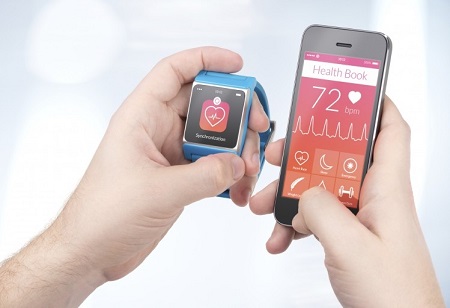It is not surprising to see
wearable technology entering the
pharmaceutical industry given how prevalent it has become in the sports and fitness industry. Pharmaceuticals used in medicine can assist doctors with monitoring their patients' health, performing
diagnostic procedures, and dispensing medication more efficiently than ever before. They also give users more agency, control, and autonomy over their health.Additionally, wearables are transforming clinical trials by accelerating and improving drug development. In research done for Intel, Kaiser Associates predicted that by 2025, sensors might be used in up to 70% of clinical trials. From fitness trackers and smart watches to smart jewellery and implantable, wearable technology has become a common component of daily life. Each year, more advanced wearable
medical devices are introduced to the market. These electronic gadgets are classified as having a microprocessor, which enables the information gathered from the user to be sent back and helps them keep tabs on a variety of things including the heart rate and sleeping patterns as well as more complicated elements like seizures.Wearables are used to gather data in real-time during
clinical trials and are regarded as research tools in this context. The use of wearable technologies in clinical trials increased from 10 to 15 percent in 2019 but how have these gadgets revolutionised clinical trials? Let us look at how wearables are transforming clinical trials in the pharma industry.
Improves the entire patient experience
Wearables improve the entire patient experience by making each stage of the clinical trial more patient-centric. The medical gadgets provide a cap on the number of clinic follow-up visits a patient must make, which was crucial during the epidemic when both patients and the clinical trial staff were prohibited from leaving their homes.Even though there were challenges with wearable medical devices in the beginning, such as getting Institutional Review Board approval and teaching elderly patients how to utilise the equipment, there has been a visible change. According to ICON's Marie McCarthy, senior director of product innovation shares that, “Previously wearables were viewed as niche and the value hadn’t been established or perceived to be worthwhile. Now, we are seeing the use of wearables to manage patients in their own home environment outside of the clinic as having huge value.â€By 2025, almost 70% of clinical trials, according to Silicon Valley tech company Intel, will make use of sensors that can monitor vital statistics like heart rate, blood sugar level, and cardiac activity.
Reduces the cost of clinical research
It costs an average of $1.3 billion to bring a medication to market, according to the most recent LSE data. This is less than had been
previously estimated, but there is still room for improvement. In phase III of a clinical trial, where up to 3,000 patients are enrolled, on-site evaluations are expensive and ineffective.However, by using wearable technology, clinical research associates can monitor endpoints like sleep, respiration rate, and even perform a gait assessment on patients with Parkinson's disease without having to be face-to-face with the patient. Additionally, the necessity for pricey medical equipment like the telemetry device is removed when high-quality data is recorded utilising portable devices.
Provides value of real-time data
The ability to continuously gather patient data in real-time is perhaps the most important benefit of adopting wearables in clinical trials. Additionally, simply viewing patient health activities in clinics can provide a picture of what is happening because 99% of patient data is actually generated outside of this environment.Companies can better comprehend side effects and gather better data by utilising wearable technologies in clinical studies. Because they give the pharmaceutical industry a better understanding of how pharmaceuticals and therapies might raise patients' quality of life, wearables are revolutionising healthcare.Essential for virtual trials
A large portion of the clinical trial market was paralysed by the Covid-19 epidemic. Researchers noted how wearables boost the accessibility of trials - both to patients who cannot leave their homes owing to an illness or those who are unable due to the pandemic.This was true as many companies confronted the issue of keeping clinical studies on-track during lockdown limitations. This demonstrates how the gadgets are hastening the adoption of technology in clinical research and pushing for the virtualization of clinical trials.Clinical trial administration is already challenging and expensive. Even if it is relatively simple to handle, adding another component increases effort, cost, and the danger of failure. It makes sense why there is such a poor wearables penetration in clinical trials. However, given that wearables offer one of the biggest chances to actually revolutionize the clinical trials sector, something needs to be done to address this issue. There are literally thousands of possible uses for wearables in clinical trials, making it unlikely that wearables businesses will tackle all of these problems on their own for economic reasons.For instance, they can be used to research a variety of difficult musculoskeletal or neurological disorders, including cancer, Parkinson's disease, Alzheimer's disease, and epilepsy. Since the market for wearables for clinical trials is generally small and low margin, the cost of creating and validating algorithms for all these applications is prohibitive. However, there is still hope. The use of wearable sensors in other industries, particularly in academic and consumer neuroscience settings, has yielded years of research and experience that the pharmaceutical sector can benefit from.Although there are several obstacles in the way of using wearables to improve clinical trials, they can help the industry achieve its objectives of bringing better pharmaceuticals to market sooner and cheaper by building on existing research from academia and other sectors and adopting a collaborative approach.